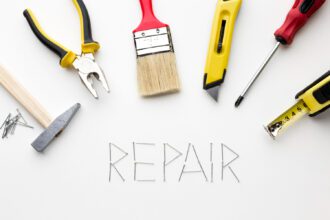As a DIY appliance repair enthusiast, you know that having the right tools can make all the difference between a successful repair and a frustrating failure. In this article, we’ll explore the five essential tools you need to tackle common appliance repairs with confidence.
Tool #1: Multimeter (Voltage Tester)
A multimeter is a versatile tool that measures voltage, current, and resistance in electrical circuits. It’s crucial for diagnosing issues in appliances like refrigerators, ovens, and dishwashers.
- Why it’s essential: A multimeter helps you identify faulty components, ensuring accurate repairs.
- Recommended model: Fluke 117/323 Electricians Multimeter Kit (around $100)
Tool #2: Torx Screwdriver Set
Appliances often feature Torx screws, which require specialized drivers. A Torx screwdriver set is vital for accessing internal components.
- Why it’s essential: Without a Torx screwdriver, you may strip screws or damage appliances.
- Recommended model: Wera 300 Series Torx Screwdriver Set (around $50)
Tool #3: Pliers and Punch Tool
Pliers and punch tools are handy for gripping small objects, bending wires, and punching holes in metal.
- Why it’s essential: These tools help you manipulate components safely and efficiently.
- Recommended model: Klein Tools 11055 Pliers and Punch Tool (around $30)
Tool #4: Refrigerator and Air Conditioner Repair Kit
This kit contains specialized tools for refrigerant leak detection, system evacuation, and component replacement.
- Why it’s essential: A dedicated repair kit ensures safe handling of refrigerants and accurate repairs.
- Recommended model: Mastercool 56101 Refrigeration and Air Conditioning Repair Kit (around $200)
Tool #5: Work Light
A reliable work light illuminates dark spaces, making it easier to diagnose and repair appliances.
- Why it’s essential: A good work light reduces eye strain and improves visibility in cramped areas.
- Recommended model: DeWalt DCL040 LED Work Light (around $40)
Additional Tips and Considerations
- When selecting tools, prioritize quality over cost. Cheap alternatives may not provide accurate readings or withstand heavy use.
- Invest in a toolbox or storage system to keep your tools organized and within reach.
- Familiarize yourself with each tool’s operation and safety guidelines before using them on appliances.
- Continuously update your skills by watching tutorials, attending workshops, and reading repair manuals.
Common Appliance Repair Scenarios
To illustrate the importance of these essential tools, let’s examine common appliance repair scenarios:
- Refrigerator Not Cooling: Use a multimeter to diagnose electrical issues or a refrigerant leak. A Torx screwdriver set may be necessary to access internal components.
Oven Not Heating: Employ a multimeter to identify faulty heating elements or wiring issues. Pliers and punch tools can help you manipulate wires safely. - Dishwasher Leaking Water: Utilize a work light to inspect the dishwasher’s underside and identify leak sources. A refrigerant repair kit may be necessary if the leak involves the compressor.
Equipping yourself with these five essential tools will significantly improve your DIY appliance repair capabilities. Remember to choose high-quality tools, follow safety guidelines, and continually develop your skills to tackle a wide range of repairs confidently.
